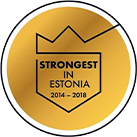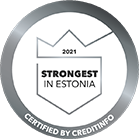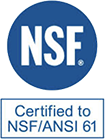FAQ
The processes and systems we put in place provide a consistent, high quality service with a focus on safety, our employees are trained and certified in the most current pandemic cleanup.
Frequently Asked Questions
Common questions about Envirolyte USA and its products.
Hypochlorous acid has a refreshing, clean smell, and it eliminates any unwanted odors, leaving your treated area smelling fresh.
Cleaning is the physical removal of dirt and debris from surfaces. Cleaning products contain a surfactant or detergent to break up dirt and debris, but they are not Environmental Protection Agency (EPA) registered and cannot make claims to kill bacteria or viruses on surfaces. Sanitizers and disinfectants contain an antimicrobial active ingredient and are EPA registered. Sanitizers reduce the number of bacteria on surfaces, but they cannot make claims against viruses. Disinfectants can be registered to kill bacteria in addition to other microbes like fungi and viruses on surfaces, including SARS-CoV-2. Disinfectants are registered by the EPA as pesticides, tested under more stringent conditions and must achieve a higher level of microbial reduction compared to sanitizers.
Hypochlorous may be safely used on any surface that is water-safe, including porcelain, tile, vinyl, marble, quartz, granite, decorative metals including bronze and copper, glass and mirrors, wood, painted surfaces, leather and upholstery, and fabrics.
Yes! Hypochlorous acid has been tested by 3rd party independent labs for cleaning performance, germ-killing efficacy, product safety, and environmental impact. Through our EPA registration, you’ll see that hypochlorous acid kills 99.999% of viruses and 99.9% bacteria.
Yes, hypochlorous acid kills mold and fungus more effectively than bleach and prevents it from returning.
The reason is that just like bubbles in a carbonated drink, hypochlorous acid starts to dissipate over time. That means a bottle of electrolyzed water sitting on a store shelf or in a warehouse would lose its efficacy within just a few weeks.
While they all work as disinfectants in sanitation, agriculture, and healthcare, they’re quite different chemicals. Hypochlorous solution is not flammable and more stable than both hydrogen peroxide and bleach. Plus, it breaks down into 2 non-toxic ingredients (water and salt), so it’s super eco-friendly.
Envirolyte USA’s anolyte is unique and clearly superior to sodium hypochlorite in the destruction of spores and bacteria. Most of the pathogens, particularly waterborne, do not develop resistance against anolyte over time. Anolyte eliminates existing scale and pathogens harbored in scale and blocks dissolved solids in supplied water from forming new scale.
Yes, Oxylyte hospital-level disinfectant is EPA registered: reg. no. 93908-1-100012.
Per the label, to clean and disinfect hard, non-porous surfaces: apply this product with a cloth, wipe, mop, sprayer, sponge, or a spray applicator. Treated, hard non-porous surfaces must remain visibly wet for 10 minutes. Allow surfaces to air dry. For visibly soiled areas, a preliminary cleaning is required.
Per the EPA’s stability protocols, Oxylyte hospital-level disinfectant continues to perform for up to 30 days from the production date at room temperature. This date can be found on the side of each container.
Oxylyte hospital-level disinfectant should never be combined with other chemicals either in a container or on the surface.
PPE is not required to use this product.
Yes, but it should be diluted to 60 ppm. Simply mix 9 parts water to 1 part hypochlorous acid 500 ppm.
Yes, our HOCl is safe for textiles. It has been tested on leather surfaces and has had no ill effects. Always test on inconspicuous areas before using though.







